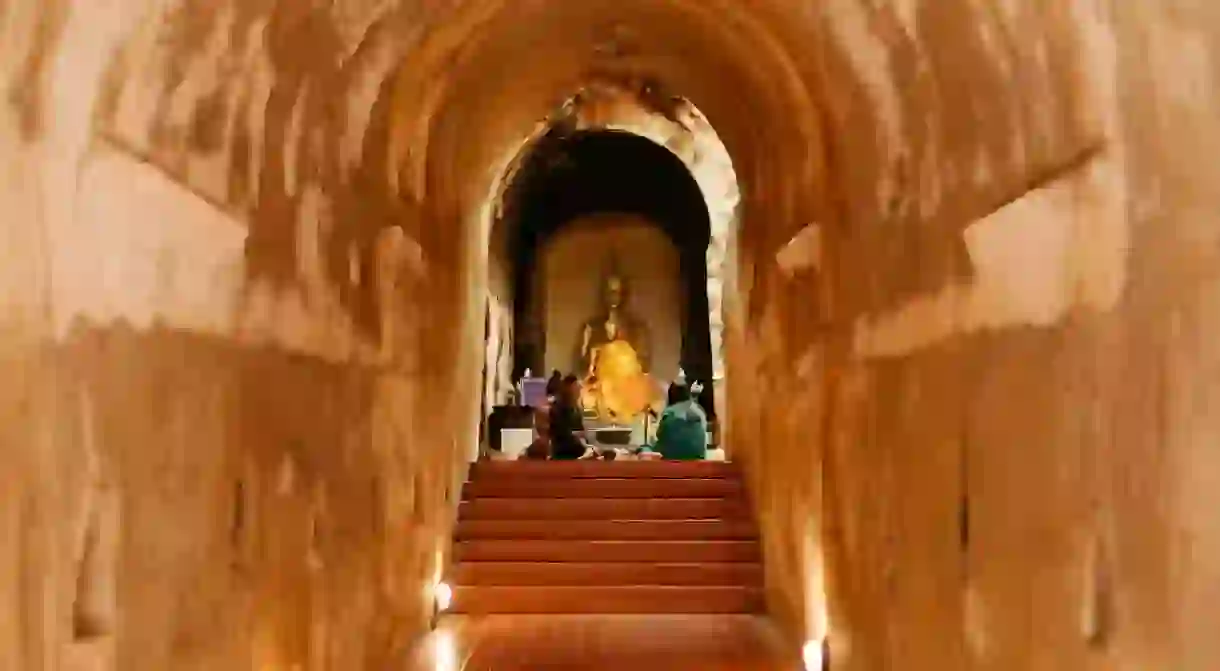Discover Wat Umong, Chiang Mai's Hidden Temple

Unlike the most popular temples within the old city of Chiang Mai, Wat Umong is surrounded by 15 acres of forest flourishing with natural vegetation. The monastery is situated on the foothills of the well-known Doi Suthep mountain, a quiet location that gives the temple its undeniably serene and peaceful atmosphere. The lack of crowds and general city chaos also make it well worth a visit.
The temple grounds are subdivided between the main temple, a meditation center, a living area for resident monks, and a lake.


According to historical documents, Wat Umong (originally named Werukattatharam), was built in 1297, a year after Chiang Mai was founded as the new capital city of the Lanna Kingdom.


Legend has it that King Phaya Mangrai, the first king of the newly established Kingdom, had the temple built for a monk called Thera Jan, whom he was very fond of.

Since the temple was surrounded by such rich vegetation, it was regarded as an Aranyawasi—a forest temple. Based on the historical evidence and the architectural structure, the meditation tunnels are estimated to have been built between the 15th and 16th century A.D.

The temple is characterized by its peculiar interior structure, which is divided into several tunnels. At the end of each tunnel is a statue of the Buddha with flowers and various other symbolic ornaments where visitors can kneel to pay their respect. The tunnels are designed in a way that reduces external sounds, creating an almost cocoon-like shell of silence within the temple.


The interior walls of the temple are slightly disintegrated but retain some vague hints of their ancient illustrations and imagery, likely depicting stories of the Buddha. Unlike most of the temples inside the old city, which have been renovated and are visibly well maintained, Wat Umong has a timeless and authentic charm about it. Its deteriorating structure and overgrown environment gives visitors an inkling of its long history.


To the right of the tunnel entrance, among the undergrowth of the forest, is a miscellaneous collection of fractured and disfigured statues of the Buddha. It resembles a curious “lost and found” section, filled with mysterious old relics that seem to have come from another time.

To the left of the temple is a staircase leading up to a towering Lanna-style stupa. A stupa traditionally contains sacred artifacts or relics of the Buddha, while its symbolic structure represents his enlightenment. Monks will circle the stupa in a clockwise direction while reciting prayers.

Proverbs etched onto small wooden plates written in Thai and English are hung around on trees. These are scattered throughout the temple grounds, reminding visitors of Buddhist teachings and values.


A small lake can be found on the edge of the temple grounds, and visitors can cross a short bridge to reach a little island. There is a small stand as you walk towards the bridge, selling fish food to feed the fish and turtles in the lake. Hordes of pigeons populate the bridge in the hopes of being fed as visitors make their way onto the other side.


Due to its peaceful location and natural surroundings, Wat Umong facilitates an authentic meditation experience. For those interested in exploring meditation and experiencing daily monastic life, there is a meditation center open to the public, which is located close to the entrance of the temple.

Getting there
Wat Umong is Located about four kilometers West of the old city, and is relatively easy to reach. If you don’t have your own means of transportation, you can grab a songthaew or a tuk-tuk to take you there. It’s worth taking a day to visit this side of Chiang Mai; as you explore further, you’ll find various cafés, restaurants and craft shops peppered around the area.














